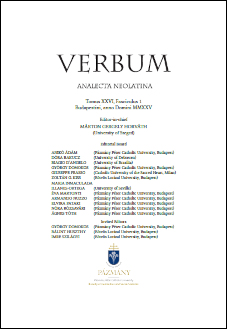Avverbi posizionali in italiano: Deissi orientata al parlante e al territorio
Published 10-07-2025
Keywords
- spoken Italian,
- positional adverbs,
- ground-oriented deixis,
- regional variation,
- corpus linguistics
How to Cite
Copyright (c) 2025 Giuliano Bernini

This work is licensed under a Creative Commons Attribution 4.0 International License.
Abstract
On the basis of the KIParla corpus, a survey is made of the use of positional adverbs forming complex prepositional phrases that anchor the situation described in a sentence in a deictic reference field oriented towards a territorial conceptualization. Positional function is performed by deictic locative adverbs with the speaker as orīgo and by the adverbs su ‘up’ and giù ‘down’ along a vertical dimension to which the speaker associates the situation described in the sentence on the basis of a point of view. This can be given in the discourse, pragmatically implied or considered shared with respect to the territory being spoken about with reference to its morphology or to the geographical continuum between the north and south poles. It is not possible to determine whether in the use of positional adverbs greater specific weight can be attributed to the discourse conditions or the speakers’ regional varieties with a dialectal substratum with ground-oriented deixis systems.
References
- Ballarè S., E. Goria & C. Mauri. (2022): Italiano parlato e variazione linguistica. Teoria e prassi nella costruzione del corpus KIParla. Bologna: Pàtron.
- Benedetti, M. & D. Ricca (2002): The systems of deictic place adverbs in the Mediterranean. In: P. Ramat & T. Stolz (eds.) Mediterranean languages. Bochum: Brockmeyer. 13–32.
- Bernini, G. (2008): Per una definizione di verbi sintagmatici: la prospettiva dialettale. In: M. Cini (a cura di) I verbi sintagmatici in italiano e nelle varietà dialettali. Stato dell’arte e prospettive di ricerca. Bern: Lang, 141–157.
- Bernini, G. (2021): Different sources of convergent patterns in the Alps. Sprachtypologie und Universialienforschung 74/1: 43–77. https://doi.org/10.1515/stuf-2021--1023.
- Cinque, G. (2022): On Two Sub-projections of the Nominal Extended Projection: Some Romance Evidence. Probus 34(1): 55–75. https://doi.org/10.1515/probus-2022--0005.
- Levinson, S. C. & D. P. Wilkins (2006): The background to the study of the language of space. In: S. C. Levinson & D. P. Wilkins (eds.) Grammars of Space. Explorations in Cognitive Diversity. Cambridge: Cambridge University Press, 1–23.
- Mauri, C., S. Ballarè, E. Goria, M. Cerruti & F. Suriano (2019): KIParla corpus: a new resource for spoken Italian. In: R. Bernardi, R. Navigli & G. Semeraro (eds.) Proceedings of the 6th Italian Conference on Computational Linguistics CLiC-it.
- Prandi, M. (2017): Varieties of Italy 2: Alpine Varieties. In: K. Jungbluth & F. Da Milano (eds.) Manual of Deixis in Romance. Berlin: de Gruyter. 114–139.
- Prandi, M. (2018): Ground-Oriented Deixis: Theoretical Implications and Empirical Data. Archivio Glottologico Italiano 103: 59–74. https://doi.org/10.1400/273442.
- Rizzi, L. (2001): Il sintagma preposizionale. In: L. Renzi, G. Salvi & A. Cardinaletti (a cura di) Grande grammatica italiana di consultazione. Vol. I, La frase. I sintagmi nominale e preposizionale. Bologna: il Mulino. 521–545.
- Salvi, G. (2013): Le parti del discorso. Roma: Carocci.
- Strik-Lievers, F. & Miola, E. (2018): Lì (‘There’) and là (‘Over There’) in Italian Phrasal Verbs. Archivio Glottologico Italiano 103: 75–97. https://doi.org/10.1400/273483.
- Vanelli, L. & L. Renzi (2001): La deissi. In: L. Renzi, G. Salvi & A. Cardinaletti (a cura di) Grande grammatica italiana di consultazione. Vol. III, Tipi di frase, deissi, formazione delle parole. Bologna: il Mulino. 261–375.

